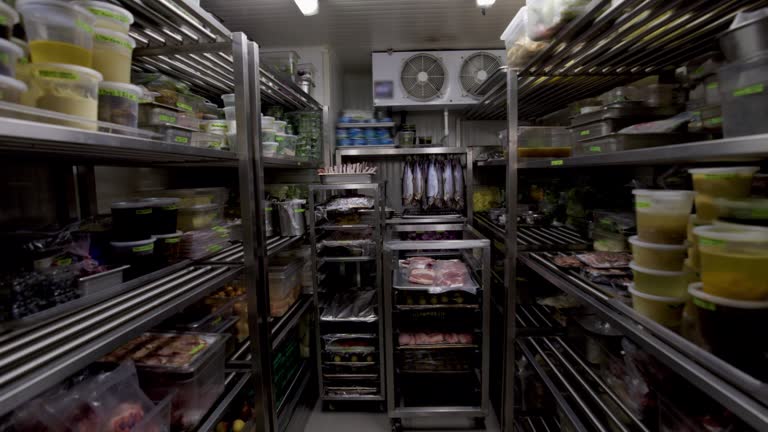Running a restaurant is tough, even in the best of times. Add inflation to the mix, and it can feel like you’re trying to keep a pot from boiling over—while juggling knives. Rising food prices, higher utility bills, and increased labor costs are all eating into profits, making cost control more critical than ever. The good news? With the right strategies, small restaurants can manage costs without sacrificing quality or customer experience.
Understanding the Squeeze: Why Everything Costs More
Inflation drives up costs across the board, from the price of fresh produce to the electricity that keeps your refrigerators humming. For small restaurant owners, these rising expenses can quickly shrink already tight margins. The key to survival isn’t just raising prices—it’s about working smarter with what you have.
Sharpening Your Menu: Profits on a Plate
Not all dishes are created equal. Some bring in higher margins, while others barely break even. Now’s the time to do a menu audit and identify which items generate the most profit. Consider these tactics:
- Ingredient Overlap: Focus on dishes that share common ingredients to reduce waste.
- Strategic Pricing: If certain high-cost items are customer favorites, adjust pricing subtly or offer smaller portions.
- Seasonal Specials: Use locally sourced, in-season ingredients to lower costs and boost flavor.
- Ditch the Underperformers: If a dish isn’t selling well and isn’t profitable, it’s time to let it go.
Don’t forget presentation. A small tweak to plating or adding a unique, lower-cost ingredient can refresh a menu item and make it more appealing—sometimes, the perception of value is just as important as the actual cost.
Kitchen Efficiency: Cutting Costs, Not Corners
A well-run kitchen doesn’t just turn out great food—it saves money. Tightening up operations can lead to significant cost reductions. Here’s how:
- Portion Control: Use consistent measuring tools to prevent over-serving.
- Energy Savings: Upgrade to energy-efficient appliances and be mindful of peak electricity hours.
- Waste Reduction: Train staff on proper storage and rotation to prevent spoilage.
- Batch Prep: Preparing ingredients in bulk can cut down on labor costs and time.
- Cross-Train Employees: When employees can handle multiple roles, you can reduce reliance on excess staff during slow shifts.
Additionally, consider reducing menu complexity. A streamlined menu speeds up prep time, minimizes errors, and allows staff to be more efficient.
Smart Sourcing: Negotiating Better Deals
When food costs rise, supplier relationships become even more important. It never hurts to ask for better deals or explore new sourcing options:
- Bulk Buying: If storage allows, purchase staples in larger quantities for discounts.
- Alternative Suppliers: Compare prices across vendors instead of sticking to the same one.
- Group Purchasing: Join forces with other local restaurants to buy in bulk and secure lower rates.
- Local Partnerships: Work with local farmers and suppliers for fresher, more affordable ingredients.
Building strong supplier relationships can lead to exclusive discounts or early access to lower-priced inventory. Some vendors may even offer flexible payment terms during tough times—always ask.
Budgeting and Financial Tracking: Know Your Numbers
Flying blind when it comes to expenses is a recipe for disaster. Staying on top of financials helps spot issues before they become major problems:
- Track Expenses Regularly: Don’t wait until the end of the month to review costs.
- Use Accounting Software: Modern tools can automate tracking and provide real-time insights.
- Forecast for the Future: Plan for seasonal changes, supply chain disruptions, and labor fluctuations.
- Cost Per Dish Analysis: Understanding exactly how much each menu item costs can help refine pricing and identify waste.
Every dollar saved is a dollar earned, so even small tweaks in tracking can add up to big savings over time.
Leveraging Technology: More Than Just a POS System
Technology isn’t just for big chains—it can make a huge difference for small restaurants, too. A modern point-of-sale (POS) system helps track sales trends, identify top-selling items, and reduce errors. Beyond that:
- Online Ordering & Delivery: Partnering with third-party apps (or setting up your own system) can expand revenue streams.
- Automated Inventory Management: Prevent over-ordering and track stock levels efficiently.
- Customer Relationship Management (CRM): Personalized offers and loyalty programs keep customers coming back.
Many restaurants also find success with dynamic pricing—adjusting prices based on demand. Slow Monday night? Offer a slight discount on select items to encourage sales without deep discounting across the board.
Customer Engagement: Boosting Loyalty Without Blowing the Budget
Keeping regulars happy is more cost-effective than constantly chasing new customers. Small gestures can build strong relationships:
- Loyalty Programs: Reward repeat diners with discounts or perks.
- Community Events: Hosting themed nights or collaborations with local businesses can drive traffic.
- Social Media Presence: Engage with customers online and keep them excited about your brand.
Encouraging user-generated content—like sharing customer photos of meals on social media—can also drive engagement and build a sense of community without adding marketing costs.
The Bottom Line: Adapt and Thrive
Cost control isn’t about cutting corners—it’s about being strategic, adaptable, and resourceful. Small restaurants that embrace smart menu planning, efficient operations, better supplier negotiations, and modern technology will be better positioned to weather inflation and thrive in the long run. The key is taking action now, before rising costs start eating into more than just your margins.
Survival in the restaurant industry has always been about agility. Inflation might make things harder, but with the right cost-saving strategies, small restaurant owners can still serve great food, maintain customer loyalty, and protect their bottom line.

